6-[[(1,1-Dimethylethoxy)carbonyl]amino]hexanoic acid 2,5-dioxo-1-pyrrolidinyl ester
![6-[[(1,1-Dimethylethoxy)carbonyl]amino]hexanoic acid 2,5-dioxo-1-pyrrolidinyl ester Structure](https://image.chemsrc.com/caspic/026/51513-80-5.png)
6-[[(1,1-Dimethylethoxy)carbonyl]amino]hexanoic acid 2,5-dioxo-1-pyrrolidinyl ester structure
|
Common Name | 6-[[(1,1-Dimethylethoxy)carbonyl]amino]hexanoic acid 2,5-dioxo-1-pyrrolidinyl ester | ||
|---|---|---|---|---|
| CAS Number | 51513-80-5 | Molecular Weight | 328.36100 | |
| Density | 1.2g/cm3 | Boiling Point | N/A | |
| Molecular Formula | C15H24N2O6 | Melting Point | 86-90ºC | |
| MSDS | Chinese USA | Flash Point | N/A | |
| Symbol |

GHS07 |
Signal Word | Warning | |
Use of 6-[[(1,1-Dimethylethoxy)carbonyl]amino]hexanoic acid 2,5-dioxo-1-pyrrolidinyl ester6-(N-Boc)caproic acid NHS is a protein cross-linking agent. |
| Name | t-Boc-aminocaproic-N-hydroxysuccinimide |
|---|---|
| Synonym | More Synonyms |
| Description | 6-(N-Boc)caproic acid NHS is a protein cross-linking agent. |
|---|---|
| Related Catalog | |
| References |
| Density | 1.2g/cm3 |
|---|---|
| Melting Point | 86-90ºC |
| Molecular Formula | C15H24N2O6 |
| Molecular Weight | 328.36100 |
| Exact Mass | 328.16300 |
| PSA | 102.01000 |
| LogP | 2.00750 |
| Index of Refraction | 1.507 |
| InChIKey | TYJPSIQEEXOQLC-UHFFFAOYSA-N |
| SMILES | CC(C)(C)OC(=O)NCCCCCC(=O)ON1C(=O)CCC1=O |
| Water Solubility | Very slightly soluble (0.95 g/L) (25 ºC) |
|
SECTION 1: Identification of the substance/mixture and of the company/undertaking Product identifiers Product name: Boc-6-Ahx-OSu REACH No.: A registration number is not available for this substance as the substance or its uses are exempted from registration, the annual tonnage does not require a registration or the registration is envisaged for a later registration deadline.
CAS-No.: 51513-80-5 Relevant identified uses of the substance or mixture and uses advised against Identified uses: Laboratory chemicals, Manufacture of substances SECTION 2: Hazards identification Classification of the substance or mixture Classification according to Regulation (EC) No 1272/2008 Skin irritation (Category 2), H315 For the full text of the H-Statements mentioned in this Section, see Section 16. Classification according to EU Directives 67/548/EEC or 1999/45/EC Xi IrritantR38 For the full text of the R-phrases mentioned in this Section, see Section 16. Label elements Labelling according Regulation (EC) No 1272/2008 Pictogram Signal wordWarning Hazard statement(s) H315Causes skin irritation. Precautionary statement(s)none Supplemental Hazardnone Statements Other hazards - none SECTION 3: Composition/information on ingredients Substances Synonyms: 6-(Boc-amino)hexanoic acid N-succinimidyl ester 6-(Boc-amino)caproic acid N-succinimidyl ester Formula: C15H24N2O6 Molecular Weight: 328,36 g/mol CAS-No.: 51513-80-5 Hazardous ingredients according to Regulation (EC) No 1272/2008 ComponentClassificationConcentration Boc-6-Ahx-OSu CAS-No.51513-80-5Skin Irrit. 2; H315<= 100 % Hazardous ingredients according to Directive 1999/45/EC ComponentClassificationConcentration Boc-6-Ahx-OSu CAS-No.51513-80-5Xi, R38<= 100 % For the full text of the H-Statements and R-Phrases mentioned in this Section, see Section 16 SECTION 4: First aid measures Description of first aid measures General advice Consult a physician. Show this safety data sheet to the doctor in attendance. If inhaled If breathed in, move person into fresh air. If not breathing, give artificial respiration. Consult a physician. In case of skin contact Wash off with soap and plenty of water. Consult a physician. In case of eye contact Flush eyes with water as a precaution. If swallowed Never give anything by mouth to an unconscious person. Rinse mouth with water. Consult a physician. Most important symptoms and effects, both acute and delayed The most important known symptoms and effects are described in the labelling (see section 2.2) and/or in section 11 Indication of any immediate medical attention and special treatment needed no data available SECTION 5: Firefighting measures Extinguishing media Suitable extinguishing media Use water spray, alcohol-resistant foam, dry chemical or carbon dioxide. Special hazards arising from the substance or mixture Carbon oxides, nitrogen oxides (NOx) Advice for firefighters Wear self contained breathing apparatus for fire fighting if necessary. Further information no data available SECTION 6: Accidental release measures Personal precautions, protective equipment and emergency procedures Use personal protective equipment. Avoid dust formation. Avoid breathing vapours, mist or gas. Ensure adequate ventilation. Avoid breathing dust. For personal protection see section 8. Environmental precautions Do not let product enter drains. Methods and materials for containment and cleaning up Pick up and arrange disposal without creating dust. Sweep up and shovel. Keep in suitable, closed containers for disposal. Reference to other sections For disposal see section 13. SECTION 7: Handling and storage Precautions for safe handling Avoid contact with skin and eyes. Avoid formation of dust and aerosols. Provide appropriate exhaust ventilation at places where dust is formed. For precautions see section 2.2. Conditions for safe storage, including any incompatibilities Store in cool place. Keep container tightly closed in a dry and well-ventilated place. Recommended storage temperature: 2 - 8 °C Keep in a dry place. Specific end use(s) Apart from the uses mentioned in section 1.2 no other specific uses are stipulated SECTION 8: Exposure controls/personal protection Control parameters Components with workplace control parameters Exposure controls Appropriate engineering controls Handle in accordance with good industrial hygiene and safety practice. Wash hands before breaks and at the end of workday. Personal protective equipment Eye/face protection Safety glasses with side-shields conforming to EN166 Use equipment for eye protection tested and approved under appropriate government standards such as NIOSH (US) or EN 166(EU). Skin protection Handle with gloves. Gloves must be inspected prior to use. Use proper glove removal technique (without touching glove's outer surface) to avoid skin contact with this product. Dispose of contaminated gloves after use in accordance with applicable laws and good laboratory practices. Wash and dry hands. The selected protective gloves have to satisfy the specifications of EU Directive 89/686/EEC and the standard EN 374 derived from it. Full contact Material: Nitrile rubber Minimum layer thickness: 0,11 mm Break through time: 480 min Material tested:Dermatril® (KCL 740 / Z677272, Size M) Splash contact Material: Nitrile rubber Minimum layer thickness: 0,11 mm Break through time: 480 min Material tested:Dermatril® (KCL 740 / Z677272, Size M) data source: KCL GmbH, D-36124 Eichenzell, phone +49 (0)6659 87300, test method: EN374 If used in solution, or mixed with other substances, and under conditions which differ from EN 374, contact the supplier of the CE approved gloves. This recommendation is advisory only and must be evaluated by an industrial hygienist and safety officer familiar with the specific situation of anticipated use by our customers. It should not be construed as offering an approval for any specific use scenario. Body Protection impervious clothing, The type of protective equipment must be selected according to the concentration and amount of the dangerous substance at the specific workplace. Respiratory protection For nuisance exposures use type P95 (US) or type P1 (EU EN 143) particle respirator.For higher level protection use type OV/AG/P99 (US) or type ABEK-P2 (EU EN 143) respirator cartridges. Use respirators and components tested and approved under appropriate government standards such as NIOSH (US) or CEN (EU). Control of environmental exposure Do not let product enter drains. SECTION 9: Physical and chemical properties Information on basic physical and chemical properties a) AppearanceForm: powder Colour: white b) Odourno data available c) Odour Thresholdno data available d) pHno data available e) Melting point/freezingMelting point/range: 86 - 90 °C point f) Initial boiling point and no data available boiling range g) Flash pointno data available h) Evapouration rateno data available i) Flammability (solid, gas) no data available j) Upper/lowerno data available flammability or explosive limits k) Vapour pressureno data available l) Vapour densityno data available m) Relative densityno data available n) Water solubilityno data available o) Partition coefficient: n- log Pow: 1,117 octanol/water p) Auto-ignitionno data available temperature q) Decompositionno data available temperature r) Viscosityno data available s) Explosive propertiesno data available t) Oxidizing propertiesno data available Other safety information no data available SECTION 10: Stability and reactivity Reactivity no data available Chemical stability Stable under recommended storage conditions. Possibility of hazardous reactions no data available Conditions to avoid no data available Incompatible materials no data available Hazardous decomposition products Other decomposition products - no data available In the event of fire: see section 5 SECTION 11: Toxicological information Information on toxicological effects Acute toxicity no data available Skin corrosion/irritation no data available Serious eye damage/eye irritation no data available Respiratory or skin sensitisation Prolonged or repeated exposure may cause allergic reactions in certain sensitive individuals. The preceding data, or interpretation of data, was determined using Quantitative Structure Activity Relationship (QSAR) modeling. Germ cell mutagenicity no data available Carcinogenicity IARC:No component of this product present at levels greater than or equal to 0.1% is identified as probable, possible or confirmed human carcinogen by IARC. Reproductive toxicity no data available Specific target organ toxicity - single exposure no data available Specific target organ toxicity - repeated exposure no data available Aspiration hazard no data available Additional Information RTECS: Not available SECTION 12: Ecological information Toxicity no data available Persistence and degradability no data available Bioaccumulative potential no data available Mobility in soil no data available Results of PBT and vPvB assessment PBT/vPvB assessment not available as chemical safety assessment not required/not conducted Other adverse effects no data available SECTION 13: Disposal considerations Waste treatment methods Product Offer surplus and non-recyclable solutions to a licensed disposal company. Dissolve or mix the material with a combustible solvent and burn in a chemical incinerator equipped with an afterburner and scrubber. Contaminated packaging Dispose of as unused product. SECTION 14: Transport information UN number ADR/RID: -IMDG: -IATA: - UN proper shipping name ADR/RID: Not dangerous goods IMDG: Not dangerous goods IATA:Not dangerous goods Transport hazard class(es) ADR/RID: -IMDG: -IATA: - Packaging group ADR/RID: -IMDG: -IATA: - Environmental hazards ADR/RID: noIMDG Marine pollutant: noIATA: no Special precautions for user no data available SECTION 15 - REGULATORY INFORMATION N/A SECTION 16 - ADDITIONAL INFORMATION N/A |
|
~93% ![6-[[(1,1-Dimethylethoxy)carbonyl]amino]hexanoic acid 2,5-dioxo-1-pyrrolidinyl ester Structure](https://image.chemsrc.com/caspic/026/51513-80-5.png)
6-[[(1,1-Dimeth... CAS#:51513-80-5 |
| Literature: Adamczyk, Maciej; Fishpaugh, Jeffrey R.; Heuser, Kevin J.; Ramp, John M.; Reddy, Rajarathnam E.; Wong, Martin Tetrahedron, 1998 , vol. 54, # 13 p. 3093 - 3112 |
|
~92% ![6-[[(1,1-Dimethylethoxy)carbonyl]amino]hexanoic acid 2,5-dioxo-1-pyrrolidinyl ester Structure](https://image.chemsrc.com/caspic/026/51513-80-5.png)
6-[[(1,1-Dimeth... CAS#:51513-80-5 |
| Literature: Tsuboi, Katsunori; Bachovchin, Daniel A.; Speers, Anna E.; Spicer, Timothy P.; Fernandez-Vega, Virneliz; Hodder, Peter; Rosen, Hugh; Cravatt, Benjamin F. Journal of the American Chemical Society, 2011 , vol. 133, # 41 p. 16605 - 16616 |
|
~% ![6-[[(1,1-Dimethylethoxy)carbonyl]amino]hexanoic acid 2,5-dioxo-1-pyrrolidinyl ester Structure](https://image.chemsrc.com/caspic/026/51513-80-5.png)
6-[[(1,1-Dimeth... CAS#:51513-80-5 |
| Literature: Mikhura, I. V.; Formanovskii, A. A. Chemistry of Heterocyclic Compounds (New York, NY, United States), 1992 , vol. 28, # 2 p. 205 - 212 Khimiya Geterotsiklicheskikh Soedinenii, 1992 , # 2 p. 247 - 255 |
|
~% ![6-[[(1,1-Dimethylethoxy)carbonyl]amino]hexanoic acid 2,5-dioxo-1-pyrrolidinyl ester Structure](https://image.chemsrc.com/caspic/026/51513-80-5.png)
6-[[(1,1-Dimeth... CAS#:51513-80-5 |
| Literature: Gavande, Navnath; Kim, Hye-Lim; Doddareddy, Munikumar R.; Johnston, Graham A. R.; Chebib, Mary; Hanrahan, Jane R. ACS Medicinal Chemistry Letters, 2013 , vol. 4, # 4 p. 402 - 407 |
|
~% ![6-[[(1,1-Dimethylethoxy)carbonyl]amino]hexanoic acid 2,5-dioxo-1-pyrrolidinyl ester Structure](https://image.chemsrc.com/caspic/026/51513-80-5.png)
6-[[(1,1-Dimeth... CAS#:51513-80-5 |
| Literature: Doughty; Chaurasia; Li Journal of Medicinal Chemistry, 1993 , vol. 36, # 2 p. 272 - 279 |
|
~% ![6-[[(1,1-Dimethylethoxy)carbonyl]amino]hexanoic acid 2,5-dioxo-1-pyrrolidinyl ester Structure](https://image.chemsrc.com/caspic/026/51513-80-5.png)
6-[[(1,1-Dimeth... CAS#:51513-80-5 |
| Literature: Mikhura, I. V.; Formanovskii, A. A. Chemistry of Heterocyclic Compounds (New York, NY, United States), 1992 , vol. 28, # 2 p. 205 - 212 Khimiya Geterotsiklicheskikh Soedinenii, 1992 , # 2 p. 247 - 255 |
| Precursor 7 | |
|---|---|
| DownStream 3 | |
| HS Code | 2925190090 |
|---|---|
| Summary | 2925190090 other imides and their derivatives; salts thereof VAT:17.0% Tax rebate rate:9.0% Supervision conditions:none MFN tariff:6.5% General tariff:30.0% |
|
Chromogenic and fluorogenic glycosylated and acetylglycosylated peptides as substrates for serine, thiol and aspartyl proteases.
J. Pept. Res. 53 , 109, (1999) We synthesized short chromogenic peptidyl-Arg-p-nitroanilides containing either (Galbeta)Ser or (Glcalpha,beta)Tyr at P2 or P3 sites as well as O-acetylated sugar moieties and studied their hydrolysis... |
|
|
An efficient stereoselective synthesis of 6-alpha-aminoestradiol: preparation of estradiol fluorescent probes.
Steroids 62 , 462, (1997) 6-Oxoestradiol (2) was protected as its bis[(2-trimethylsilylethoxy)methyl] ether (4) and converted to the corresponding oxime (4). The oxime (4) on reduction with zinc in ethanol afforded the bis-SEM... |
| (2,5-dioxopyrrolidin-1-yl) 6-[(2-methylpropan-2-yl)oxycarbonylamino]hexanoate |
| Boc-6-Ahx-OSu |
| 6-(Boc-amino)caproic acid N-succinimidyl ester (6-(Boc-amino)hexanoic acid N-succinimidyl ester |
| 6-[[(1,1-Dimethylethoxy)carbonyl]amino]hexanoic acid 2,5-dioxo-1-pyrrolidinyl ester |
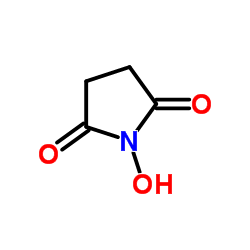


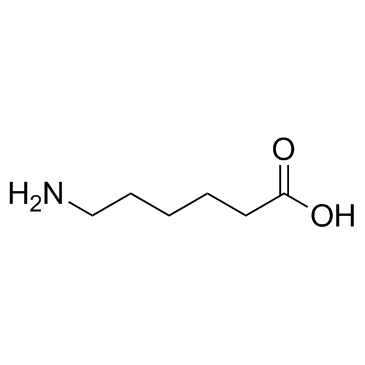
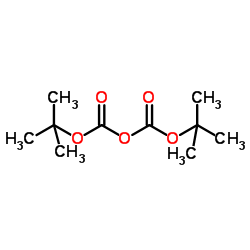

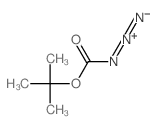
 CAS#:69790-18-7
CAS#:69790-18-7![6-amino-N-[(3-oxo-1,2-oxazol-5-yl)methyl]hexanamide structure](https://image.chemsrc.com/caspic/052/919832-74-9.png) CAS#:919832-74-9
CAS#:919832-74-9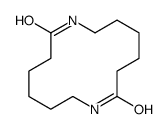 CAS#:56403-09-9
CAS#:56403-09-9
